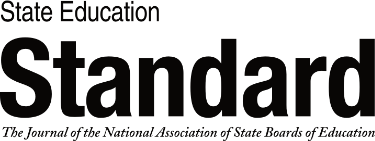Connecting Students and Policymakers in North Carolina

After countless hours of planning and development, North Carolina rolled out a statewide initiative to engage more students in education policy in October 2024. NC Student Voice Connect involves students in policy development through frequent, short, anonymous digital surveys on pressing issues. In my capacity as student advisor to the North Carolina State Board of Education, I direct the initiative.
It is no secret that North Carolina’s educators have been much more engaged in networks than its students have. Teachers, principals, local superintendents, and school board members all typically join various associations that meet frequently and give voice to their insights on the classroom and the policies that affect what happens there. These associations gather and deliver their feedback to key statewide policymakers, and it guides the development of policy.
There are more than 1.5 million students in North Carolina’s public schools. Each has a unique perspective and valuable insight, but there was no concerted effort to gather it or convey it to policymakers. Having an association that all students could join proved infeasible and unsustainable. I conducted interviews with students across the state to find an alternative.
There are more than 1.5 million students in North Carolina’s public schools. Each has a unique perspective and valuable insight.
The interviews provided key insights. Digital means for gathering student input through surveys would be paramount. Brevity and simplicity would be key; no student would spend longer than 10 minutes to complete a form. Students also said anonymity was important for avoiding the pressure some may feel to dampen their ideas if they attached names and email addresses to their feedback. But all interviewees shared a desire to influence the policies affecting their education. This motivation laid the groundwork for NC Student Voice Connect. With assistance inside and outside the North Carolina Department of Public Instruction, a solution for redressing the dearth of student input on state policy was born.
NC Student Voice Connect is a valuable tool for state policymakers. They can ask for student input as they develop policies. But asked for or not, student input may be collected on any education policy under consideration and delivered at state board meetings.
Student input may be collected on any education policy under consideration and delivered at state board meetings.
For data collection purposes, surveyed students are asked their grade and school district. With over 115 school districts ranging in size from 160,000 to 500 students and more than 200 charter schools, North Carolina is diverse, so geographic distribution of respondents is prioritized over response rates.
One of the foremost challenges is getting the word out to students. So far, surveys are advertised in school district newsletters and social media. Grassroots organizations that serve students have been contacted too. The most effective advertising has been communication among students in school and online. Students are more engaged in communication with their peers than from an email or announcement from their school. I am working on a program to tap an ambassador in schools throughout the state to gather even more input.
Students are more engaged in communication with their peers than from an email or announcement from their school.
Because the initiative is new, it has gathered student input on only two issues to date. Class rank based on weighted grade point averages was up for discussion at a recent state board meeting. I presented NC Student Voice Connect findings to the board: Slightly more than half of students supported including GPAs on transcripts, saying it was an incentive for taking rigorous classes. A little less than half opposed its use, citing undue pressure, the excessive competition it engendered, and its inaccuracy as a measure of success. And in anticipation of an upcoming board session on cell phone use in schools, NC Student Voice Connect gathered input to guide these discussions. The state board members used this information, alongside teacher input, to assess scenarios and potential impacts of proposed regulations.
While young, the initiative has proved valuable to the state board and other decision makers. “The North Carolina State Board of Education highly values the voice of our public school students, and Ian is a posterchild for why,” said Rupen Fofaria, the North Carolina state board’s director of education operations and policy. “He brings incredible insights to every board meeting, especially through his NC Student Voice Connect. . . . The data is valuable to board members as they discuss and act on board matters, and its utility is compounded by Ian’s unique ability to synthesize the information and personify it through his anecdotes.” It is a model that other states can adopt, as student input everywhere can add value to policymaking. For more information, visit NC Student Voice Connect’s website at sites.google.com/view/nc-student-voice-connect.
Ian House is a student member of the North Carolina State Board of Education.
Also In this Issue
Sustaining Gains at the Pre-K to Kindergarten Transition
By Robert C. Pianta and Christina StephensBetter alignment in policy and practice can ensure that the skill boosts from pre-K persist throughout the elementary years.
Supporting Students in the Middle Grades
By Creed Dunn, Judy Frank and Allyson MorganAcademic success, engagement, attendance, and postsecondary preparation hinge on smooth transitions at the center of K-12.
Promoting Students’ Well-Being during the Transition to High School
By Briana A. López and Aprile D. BennerAcademic success in ninth grade requires supports for healthy social and emotional development.
Prioritizing the Measures of K-12 Success That Matter Most
By Ryan ReynaState leaders can drive real system improvements by rewarding K-12 schools for helping students succeed after high school.
FAFSA as a Pathway to Postsecondary Education
By Alessandra Cipriani-Detres, Anika Van Eaton and Elizabeth WoodLearning from early adopters of universal FAFSA can help other states design and implement effective policies.
How Illinois Gets Students Ready for College and Careers
By Emily RuscaState leaders build coherent policies and frameworks to help communities guide students through their postsecondary paces.
Supporting Students with Disabilities in Transitioning to Adulthood
By Jennifer K. Migliore, Jessica Ellott, Kimberly J. Osmani and Lydia DempseyA collaborative approach can improve students’ outcomes.









 i
i
 i
i
 i
i